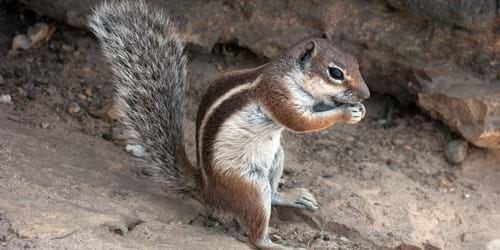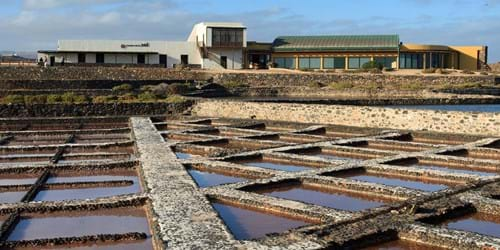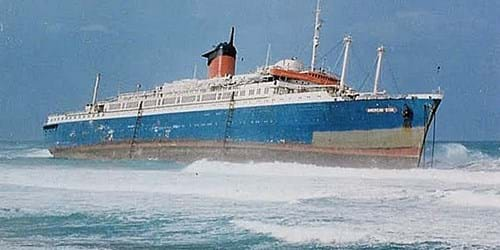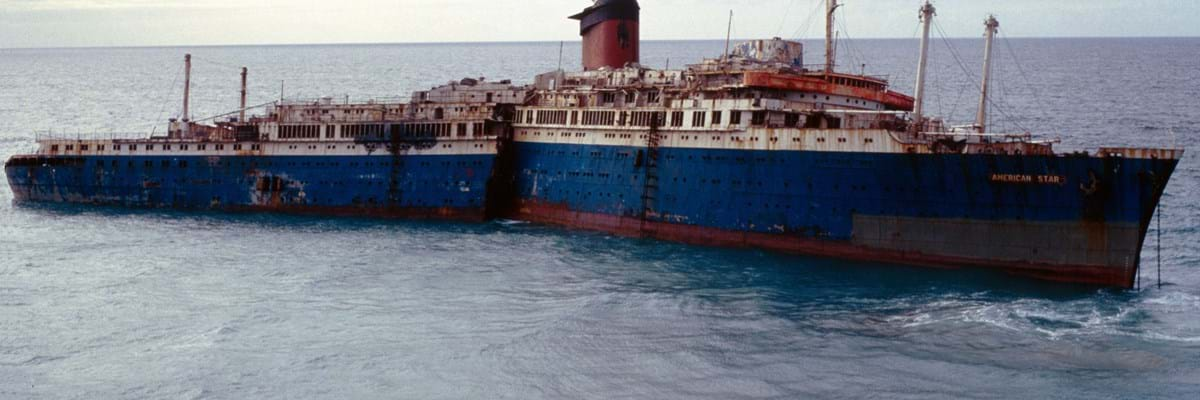What are those cute little animals that run wild in parts of the island? How does a desert island get enough water for everyone? And why did a cruise liner that won medals in World War Two sink off the west coast?
Animal magic for visitors to Fuerteventura
Chipmunk-type animals run loose in many parts of Fuerteventura. Fifty years ago there weren’t any at all, then someone brought in two as pets. They escaped and bred. Now there are hundreds, if not thousands, of the cute little creatures that are actually Barbary squirrels. They pop out of their burrows to encourage visitors to share picnics. The authorities would rather you didn’t feed them. Signs explain that they damage flora and fauna.

Image credit: Chrumps - Own work, CC BY-SA 4.0, Link
Taking salt from water
How does an island that receives less rainfall than some parts of the Sahara Desert cope with two million visitors a year? Answer: It uses the sea.
Fuerteventura has numerous desalination plants that generate thousands of gallons of water every day. Some hotel complexes have their own units.
The first plant became operational more than 40 years ago and before that water supplies were shipped in during the summer. Some years no rain falls from May to September.
Desalinated water is OK for cooking, showers and teeth cleaning but visitors are advised to buy bottled water for drinks.
Salt for preserving food has been extracted from seawater since ancient times. The Salt Museum at Las Salinas del Carmen on the east coast demonstrates the traditional processing method which involves large evaporation tanks where seawater is baked in the sun.
The fascinating history of something we take for granted is explained. For instance, in Roman times salt was so precious soldiers were paid with it. There is a guided tour of the site which includes huge white piles of the stuff drying in the sun. Strangely, it is all overlooked by the skeleton of whale.

Sinking of a war hero
Once upon a time it was one of America’s most famous cruise ships, carrying more than 1,000 passengers on luxurious voyages around the world. Then it earned medals as a troop ship in World War Two when it transported more soldiers around war zones than any other US ship.
Then it grew old and died off Fuerteventura.
What remains of the American Star is on the seabed off the remote beach of Playa de Garcey on the wild west coast. It ran aground there on a stormy night in 1992 after the rope snapped as it was being towed to Thailand to be restored as a floating hotel.
Islanders have watched over the years as the waves and rocks have gradually broken up the 30,000-tonne ship. Some of what remains can still be seen at low tide.

Image credit: America4094 - Own work, CC BY-SA 4.0, Link
Banner image credit Alcanizero - Own work, CC BY-SA 4.0, Link




